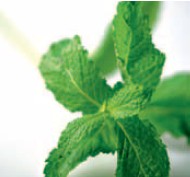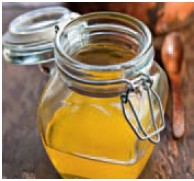Easy Indian Cooking (7 page)
Read Easy Indian Cooking Online
Authors: Hari Nayak

split yellow peas (
chana dal
)
and mung beans (
mung dal
)
, split red lentils (
masoor dal
)
, split pigeon peas (
toor dal
)
and black-eyed peas.

Fennel Seeds
These are the oval pale greenish-yellow seeds of the common fennel plant, a member of parsley family. They are sweetly aromatic and have an aniselike flavor. In Indian cooking, they are used whole and ground in both sweet and savory dishes. Roasted fennel seeds are sometimes sugarcoated and chewed as a digestive and mouth freshener after Indian meals. They are available most grocery stores.

Fenugreek Seeds
Fenugreek seeds are tiny, bitter, yellowish-brown seeds that provide commercial curry powders with their distinctive aroma. They are used in small quantities because of their strong flavor. The seeds are often oil-roasted and then ground to create a bitter balance in curries in the southern part of India; in the eastern part of India the seeds are stir-fried whole. Whole fenugreek seeds are available only in Southeast Asian or Indian grocery stores.

Garlic
A close relative to onion, shallot and the leek, garlic has been used throughout recorded history for both culinary and medicinal purposes. It has a characteristic pungent, spicy flavor that mellows and sweetens considerably with cooking. Garlic powder is not a substitute for fresh garlic in traditional Indian cooking. Whole bulbs of garlic will keep for several months or longer when stored at room temperature in a dry, dark place that has ample air circulation. Keep in mind, however, that garlic’s shelf life begins to decrease more rapidly once you start removing cloves from the bulb. Storing garlic uncovered, such as in a wire-mesh basket inside your cupboard is ideal. You can also store garlic in a paper bag or a mesh bag. Just be sure there is plenty of dry air and little light to inhibit sprouting. To avoid mold, do not refrigerate or store garlic in plastic bags.

Ginger
Ginger is a knobby, pale-brown rhizome of a perennial tropical plant. It is available fresh, dried and ground into a powder and as a preserved stem. Ground ginger or preserved ginger is almost never used in Indian cooking. Fresh ginger root has no aroma, but once you peel or cut it, it emits a warm, woody aroma with citrus undertones. When used fresh, it has a peppery hot bite to it. Fresh ginger is used throughout India and is a very common ingredient in Indian cooking. It is often ground into a paste, finely chopped, or made into juice. We add chopped ginger to stir-fry vegetables, crushed ginger or ginger paste in meat stews and legumes and thinly sliced slivers of raw ginger are sometimes sprinkled over curries just before serving. While shopping for fresh ginger, look for a hard and heavy root that snaps easily into pieces. Avoid dry, shriveled roots that feel light for their size. Keep fresh ginger in your refrigerator crisper in a plastic bag with a paper towel to absorb moisture (to prevent mold, change the towel occasionally). It will last for two or three weeks. To extend its life, you can freeze ginger. You don't even need to defrost it, and ginger is much easier to grate when frozen.
Lentils
see
Dried Legumes

Mace
Mace is the dark, red, lacy membrane that covers the outside of the nutmeg shell. This is skillfully removed after the fruit bursts opens, then flattened and dried to become mace, as we know the spice. Mace has a rich, warm, citrusy, spicy aroma and bitter taste, very similar to nutmeg, only stronger. It is often used in small quantities for making spice blends and pastes. Whole mace, or “blades,” is often toasted and ground and then mixed with yogurt, herbs and other spices to marinate Indian grilled or roasted meats. Whole mace is also an important ingredient in rice dishes made with basmati rice, such as Saffron Rice and Chicken Casserole (page 81), where it imparts a unique flavor to the dish. This aromatic spice is a delightful match for the wonderful fragrance of basmati rice. Whole mace is available in Indian or Middle Eastern grocery stores or online.

Mint
Mint is an aromatic, almost exclusively perennial herb with a very refreshing taste. Fresh mint is often used in Indian marinades, chutneys, drinks and desserts, as well as in certain curries and rice dishes. I also use dried mint for making breads in my kitchen. Chopped fresh mint leaves steeped in a cup of hot water with tea and honey is one of my favorite soothing after-dinner digestif beverages. The spearmint variety is most commonly used in Indian cooking. When purchasing mint, make sure the leaves are fresh and green in color without and black spots or cracks. See “Storage Tips for Spices and Herbs,” page 10.

Mustard Seeds
These tiny, round, hot and pungent seeds are from an annual plant of the cabbage family. They are available in white, yellow, brown, or black colors. The white seeds, the largest type, are used to make commercial mustards in the United States; and the yellow and brown seeds are used for European mustards and for pickling. In India, the black seeds are used in cooking and are the source of commonly used oil. Black mustard seeds are used whole and in powdered form. The whole seeds are used in vegetable dishes, curries, appetizers, salads, and dried legumes, while the powder is used to flavor steamed fish, pickles, and, again, curries. Mustard seeds are available at Indian grocery stores and online.

Oils and Fats
In Indian kitchens, oil is used alone or in combination with
ghee
(clarified butter) to fry flavorings at the start of cooking or to deep-fry foods. The oil used depends on the culture and region. When I call for oil, you many use any neutral-flavored vegetable oil (for example, canola, safflower or corn oil). In addition to using unflavored oils, Indians use toasted sesame oil, coconut oil, peanut and mustard oil to impart distinct flavors to dishes. I have not used these oils in my recipes as some are hard to find and they give a very distinct flavor to the food, which, though popular in India, can be an acquired taste for non-Indian. When I call for oil for deep-frying, it’s important to use an oil that is relatively stable at high temperatures, such as peanut oil or safflower oil. Additionally, olive oil, which is a very healthy oil, can also be used to cook Indian food.
